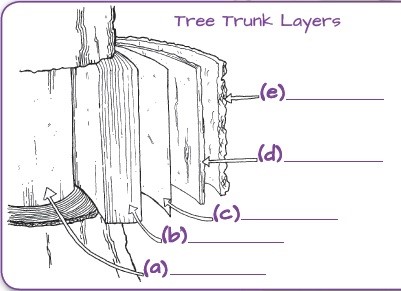 As an elementary educator, I appreciate the depth, rigor, and variety of Project Learning Tree’s activities. PLT is a perfect fit for addressing several important science standards, particularly in life science. PLT forms the core of my life science curriculum because the activities are a great way to address science benchmarks through interactive inquiry.
As an elementary educator, I appreciate the depth, rigor, and variety of Project Learning Tree’s activities. PLT is a perfect fit for addressing several important science standards, particularly in life science. PLT forms the core of my life science curriculum because the activities are a great way to address science benchmarks through interactive inquiry.
What I hear, I forget
What I see, I remember
What I do, I understand
~Confucius
My students love doing PLT! They enjoy the many hands-on experiences and the outdoor exploration of our urban schoolyard. We have witnessed several benefits: Solid gains in science test scores, fewer disruptive behaviors, higher student engagement, and better content retention. (Plus, as one student put it, “This is super fun!”)
PLT Activity 63: Tree Factory
One of our major life science standards is making sure students can identify the parts, structures, and functions of a tree or other plant. Tree Factory, PLT activity 63 pictured above, is one that really helps students learn and understand these concepts. In this activity, each student acts out a different part of a huge imaginary tree. We begin by building the Heartwood at the center of the tree and learning about what it does for the tree. We then act out other parts of a tree, building one part of our imaginary giant tree at a time.
The activity can be done indoors or outdoors. It gets kids up and moving and builds our sense of learning as a community as students work together to create a “tree factory.” The learning really “sticks” (no pun intended!) as students remember how they acted to portray their role in our tree, and the chants and actions other students used to describe the tree’s many functions.
Student Cards
To help facilitate this activity, I created these Tree Factory Activity Cards for students to wear as giant name tags around their necks. This set was designed for a class of 28 but you can adjust up or down as needed for your class size.
- At the top of each card is a letter that shows the order in which students will construct their imaginary tree starting from the inside (a = heartwood at the center) to the outer edges (e = outer bark.)
- In the middle of each card is the name of the tree part, a detailed definition, and a rhythmic chant to describe what function that part of the tree performs. So for example, the students who make up the Outer Bark chant, “We protect, we protect!” and demonstrate how they guard and protect the inside of the tree. Students have fun creating their own movements as a team (flexing their muscles, holding their palms outward, etc.)
- Lastly, at the very bottom of each card is a number in parentheses showing how many students you may wish to have act out that part of the tree. For example, the Outer Bark card has an 8 at the bottom, indicating you may wish to have about 8 students for that ring of the tree.
Print these out and try them with your students next time you facilitate this activity, and watch this video clip to see one rendition of how you might conduct this activity.
Preparation
(I suggest PLT’s Activity 27: Every Tree for Itself as a possible prequel to Activity 63: Tree Factory.)
Before doing this activity, ask your students to think about what trees need to survive (food, sun, water, air, and space). Discuss how a tree might get these requirements, especially since they can’t move around the way animals can.
- How does a tree get the water it needs?
- How does a tree get the food it needs?
- How does water and food get around to all parts of the tree?
Explain that in addition to having leaves and roots, trees have special layers in their trunk and branches that help them move nutrients and water to every part of the tree. The trunk and branches also contain a growing layer of cells that create the tree’s annual growth rings, making the trunk, branches, and roots thicker each year.
Parts of a Tree
 Here’s a rundown of the various parts of a tree and what each one does:
Here’s a rundown of the various parts of a tree and what each one does:
- Heartwood – forms the central core of the tree. It is made up of dense dead wood, and it provides strength.
- Xylem – brings water and nutrients up from the roots to the leaves. Older xylem cells become part of the heartwood.
- Cambium – a very thin layer of growing tree tissue. It makes cells that become new xylem, phloem, or cambium.
- Phloem – carries sap from the leaves to the rest of the tree. At certain times of the year, phloem may also move stored sugars from the roots up to the rest of the tree.
- Outer Bark – protects the tree from injury caused by insects, animals, plants, diseases, and fire.
- Roots – anchor the tree, absorb water and nutrients
- Leaves – make food through photosynthesis
Get the Materials
Tree Factory is one of many activities in PLT’s PreK-8 Environmental Education Activity Guide. Get your copy by attending a training.


